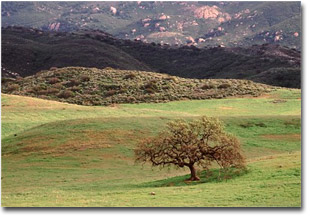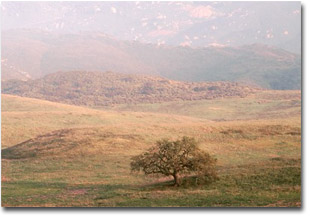|
|

Artist's Perspective... Light Matters
Text and Photography Copyright Dale Proctor The very first thing I do when teaching a photography class is hand out a blank piece of paper with pencil to every photographer in attendance and ask them to write down the three most important things they think photography is all about. Of course as I am handing out the materials, I mention this is not a test but an information gathering process I do regularly in all classes. After all the photographers have completed writing the answers to my question, I have them write their name on the paper and hand them in. I spend the next 15-20 minutes showing 30 slides focused on the subject of light. The many different angles, intensities, colors and how light affects the subject. Later, right before the end of the class I do the same thing I did as the class began, asking them to write down the three most important things about photography. Then we as a group, review the initial paperís they all wrote at the beginning of the class. Amazing what a little thing like light can do to change how we view and most of all think about photography.
When we know light is important early on, look how much time we have to work at finding the best light. Sure, there will always be subjects that will never be in great or even good light as this is never going to be a perfect world. And, I find myself making pictures in dull flat light just because I want the pleasure of doing photography not just talking about it. What would happen if we were to go out looking for that special light? Would we be limiting our success rate on so called keepers? No not hardly. What we would be doing is finding out when that special light occurs, especially if we are keeping an accurate record of our activities. It wouldnít be long and we would be going out looking for quality light in the early morning hours. Some of us adventurous souls would set the alarm clock to wake us even earlier than if we were going to work! Packing our flashlight safely in the camera bag the night before, so we will be able to see the trail we're going to hike in pre-dawn light. Oh yes, is this ever the opportunity for photography in quality light! We find our location easily because we scouted this place many times when we were actually doing photography. At the times we photographed here, the images didnít work out so well because the light was not very good for photography. Oh we thought it was, but didnít know the difference between light and good quality light. Gosh, I have been there so many times thinking ďI know what I am doing.Ē This is just the beginning of the day. There are many different times and places we must explore in order to find that special light. It didnít take me very long to figure out if I were to hunt for quality light when it was possible to have quality light, I would be much more successful in finding some. The real problem was realizing the importance quality light is to photography and understanding what to look for in light, which gives it the quality status. The best way to describe quality light is light that is soft with slight shadow, glowing when reflected, warm in color temperature and perfect for photography. And, the sooner I started to photograph in quality light the better. Light doesnít always have to be quality light to work well for photography. The quality part of color temperature may be absent and you can still capture some mighty fine images by employing an 81 series warming filter, color correction filter or gel. Soft glowing low contrast light is great, but it also is not a requirement for great photographs. Your camera position and choices made as to using the angle of light as a part of your composition can make striking images. As you read you can understand that more knowledge is required when the light is not quality light.
How do you photograph in the middle of the day and capture images that are striking or stunning? One word, clouds. Clouds help photographers as they work to diffuse bright, direct, and harsh light. The difficult and sometimes frustrating part is that clouds must be in the right position to do this magic for you. Not only do the clouds need to be in the correct position they need to be of the correct density. A thin layering of clouds will defuse light and allow a large portion of the light to strike your subject. This light situation may be just the softness needed to make your images pop. The difference when metering with my handheld Spotmeter is as little as 1/3 of a stop. Look at Photo 1 of the Oak tree. On the upper right of the tree in the branch area you can see the leaves (foliage) together. This is the area where I had my Spotmeter reading. This is also the area where the sun is going to add light as it is facing directly towards the sun. Although I could see the light playing on the ground around this tree, it was very difficult to see the light changing on those leaves. This is what will separate the tree from the background - light. I kept a watchful eye on the metering and when it moved 1/3 stop brighter, I exposed a frame. By keeping my focus on the one area - those leaves, I was not distracted by the light moving in the background, which was creating the shadowed areas. Looking in the sky and seeing where the clouds were in relation to the sun helped to anticipate how the light was going to fall. I will be adding images to future articles showing the same scenes in different light. The photo comparison is a real eye opener. Somewhat like the before and after pictures we have all seen in advertising. I want to stress, photography is about light, how we see the light and what we do about that which we see. Editor's Note - Visit Dales web site at www.californiapictures.com to view more of his work. DP - NPN 368 Comments on NPN landscape photography articles? Send them to the editor. |
|
|

